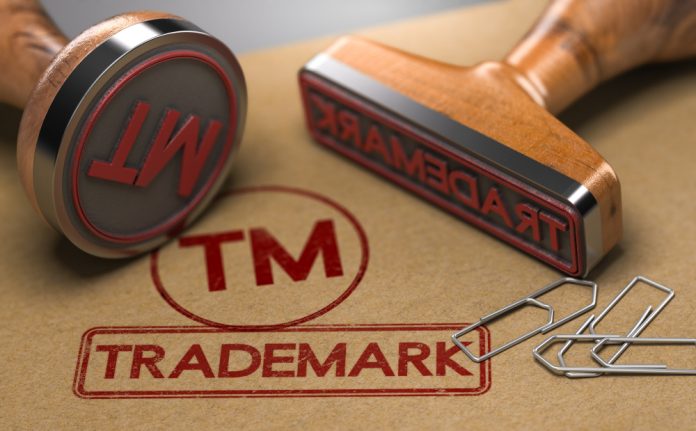This article has been written by Ushnish Moitra, pursuing a Diploma in Intellectual Property, Media and Entertainment Laws from LawSikho and has been edited by Oishika Banerji (Team Lawsikho).
It has been published by Rachit Garg.
Table of Contents
Introduction
Trademark signifies registration of any unique name, design, word, phrase, brand, logo, tagline or slogan. In simple terms trademark registration gives an unique identification to any name, brand, logo, tagline or slogan, which helps the consumers to distinguish your product with others and the limits of trademarks are not only limited to these above-mentioned spheres but also there are various numbers of unconventional trademarks such as trademarking of a unique smell, sound or taste. Trademarks give exclusive rights to the trademark holder. There are various classes of trademarks, for eg, if A wants to trademark his coffee/tea/spices products then he has to register it under Class 30. Now take another example, suppose Z wants to trademark his education business then he has to register it under Class 41. This article serves as a guide concerning trademarks for readers in general.
Evolution of trademarks
The Central Government for the first time circulated the trademark bill for public opinion in 1879. Then in the 19th century there was an urge to establish trademark practice and procedure in India, which made room for the Trademark Act 1940. Since many changes were required in the Trademark Act 1940, Trademark Act 1958 came into place, which was later overruled by the Trademark Act 1999 which still persists.
Essentials of a trademark
- It must contain a mark
- It must be easy for the consumers to speak or to remember.
- It should not be lengthy.
- It should not be barred under the trademarks act under the prohibited classes of trademarks.
Things that can be registered as a trademark
- Business name
- Product name
- Logo or label
- Symbol or design
- A product package.
DID YOU KNOW :- the duration of a trademark is ten years and that can be renewed for a further period of ten years on payment of prescribed renewal fees. This means there is no fixed tenure for how many you can trademark your above mentioned things.
Expansion in scope of trademark
Domain name system
Having a domain name in cyberspace creates an identity of the product or the services rendered. Both big as well as small businesses have web pages to create a relation between the producer and the consumer. Having a web page under a domain name of a business dedicated solely for its own purpose creates a distinct identity and helps them to grow in the business. If any business does not have a domain under their name then it will become difficult for the consumer to identify the producer and hence there will be loss of business.
The World Intellectual Property Organisation (WIPO) Arbitration and Mediation Centre has been resolving domain name cases using online arbitration since 1999. The process is conducted by ICANN (Internet Corporation for Assigned Names and Numbers), a non-profit organisation responsible for IP address allocation, protocol agreement and DNS management.
Smell mark
This is an unconventional trademark and there are specific rules of codifying its distinctive character. It is very difficult to register this type of trademark as there is no graphical representation. In some countries smell is registered as a trademark if they can provide a graphical representation to show its peculiarity. Smell trademarks are often protected under copyright law.
Shape mark
M Porter has said that differentiation is the key to competitiveness in today’s dynamic customer driven market. The shape of an object can be registered as a trademark if
- The shape does not provide a superior function.
- The shape has been associated in the minds of the purchasing public with the manufacturer.
Sound mark
Sound cannot be visually represented but can be represented in the form of graphs and notes. In India sound marks started to register after the new Trademark Act 1999 which came into force in 2003. Sounds like Netflix and Nokia are registered. A sound can be registered only if the sound is unique and distinguishable in every possible way.
How to conduct a trademark search
Making a trademark search report is a very basic and important step before registering any trademark. It involves searching the pre-existing trademark in trademark databases to identify if any potential conflicting marks may create further legal issues. The following are the steps on how to conduct a trademark search report:

- Determining the scope of the search- Before registering any trademark you need to decide the geographical scope and industry to be covered. Trademarks are registered in specific countries or regions and are categorised based on their industry type, product type.
- Using online trademark search tools- There are various paid online trademark search tools which allow to search existing trademarks by owner name, brand name, keywords or by any other relevant criteria. Examples of such tools include the United States Patent and Trademark Office (USPTO) search database, the World Intellectual Property Organization (WIPO) Global brand Database, and google patent search.
- Check national and regional databases- These databases assist you in searching regional and national databases and can be accessed through their respective websites.
- Review relevant industry publications and directories- It guides you to check if there are any pre-existing trademarks or not that could conflict in future with your intended mark.
- Consult with a trademark attorney- It is always recommended to consult with a trademark attorney to conduct a comprehensive search and review the search results.An attorney can guide you in the search results and help you determine whether your intended mark is available for use or not.
All you need to know about trademark infringement
Direct infringement
According to Section 29 of the Trademarks Act, 1999, if any unauthorised person uses someone else’s registered trademark then the trademark holder can bring legal action against that unauthorised person.
- A trademark is infringed if a registered trademark is used by anyone other than the person under whose name it has been registered without his permission, for the trade name of his business concern dealing in goods or services in respect of which the trademark is registered.
- If there has been any advertising of a registered trademark and for such advertising the advertiser takes unfair advantages to its own gain then there has been an infringement of a trademark.
Indirect trademark infringement
Where a person is not directly involved in a trademark infringement but intentionally abets(motivates) another person to infringe a trademark for his own gain through an agent is called indirect infringement.
For Eg:- B tells A to make medicines and suggests printing it under the name XYZ. B knows that there is trademark registered under the name of XYZ but does not tell it to A.Here B commits indirect infringement
Penalties for trademark infringement
Types of penalties in trademark infringements.
- Civil proceedings
- Injunction
- Temporary injunction
- Permanent injunction
- Claim for damages,
- Claim for profits.
- Destruction of goods and services
- Stop import and export
- Recover the cost of legal proceedings.
2) Criminal proceedings
In case of criminal proceedings, where the victim can file a FIR for infringing his trademark and the accused person can be even sent to custody imposing a fine starting from Rs 70,000/-(Rupees seventy thousand) to 2,00,000/-(Rupees two lakhs).
DID YOU KNOW– you cannot sue a person for using your trademark if that person uses your trademark for research purpose or for just a mere representation where that person is not gaining any unfair advantage or profits.
Judicial precedents in trademark
The Coca Cola Company vs Bisleri International Pvt Ltd (2009), the impugned precedent was for the infringement of the trademark of “MAAZA” where there was an assignment for the name clubbed with the rights so associated with the know-how, intellectual property rights, goodwill etc for the drink so known as “MAAZA”. However the rights so sold were only limited to the jurisdiction of India. In 2008, the plaintiff filed an application for registration of such a trademark in Turkey and they were also inclined towards selling the mango drink to Turkey. However the situation got undesirable for the plaintiff and therefore Coca-cola claimed for permanent injunction as well as claimed for damages or compensation for the passing off and infringement of the trademark. The Hon’ble Delhi High Court, adjudged in favour of the plaintiff and held that exporting of goods from a country would be very well constituted as the sale of goods within that particular country from where the goods are exported.
In the case of Clinique Laboratories LLC and Anr vs Gufic Limited and Anr (2009), the issue was between the registered trademark of the plaintiff and the defendant. The plaintiff had registered the trademark “CLINIQUE”. On the other hand the defendant filed for the trademark of ‘CLINIQ’. The plaintiff filed for infringement of trademark as it would cause confusion in the mind of the consumers and also the distinctiveness of the trademark of the plaintiff will be hampered. The Hon’ble Court adjudicated that the defendants marks are similar as to that of the plaintiff such that it would result in deceiving the minds of the consumers. Hence the court granted a temporary injunction in the favour of the plaintiff till the disposal of the suit by competent authority.
Conclusion
To gain a distinctive character in the market, to gain customers’ trust and build a relation with them, trademark is required. If there is a trademark registered by the producer then it would help the business to grow. If we take the example of Paranthe Wali gali in Chandni Chowk it would be next to impossible for any consumer to visit each and every shop and decide which one is the best, but on the contrary if the original paranthe wala dhabe would have registered a trademark then it would have been very easy for the consumers to distinguish between others and the original one. Trademark not only gives a distinct reputation to any business but also gives right to them. There are various grounds on which the plaintiff under whose name the trademark has been registered can take legal actions against the defendants.Iit not only empowers the trademark holder but also gives a sense of security to them. It is advisable to conduct a thorough trademark search before registering any as any infringement of a trademark attracts both civil and criminal sanctions and obtain legal advice before adapting a new trade name or brand to avoid any future problems, legal disputes and sanction.
References
https://www.altacit.com/trademark/evolution-of-trademark-laws-in-india/
Students of Lawsikho courses regularly produce writing assignments and work on practical exercises as a part of their coursework and develop themselves in real-life practical skills.
LawSikho has created a telegram group for exchanging legal knowledge, referrals, and various opportunities. You can click on this link and join:
Follow us on Instagram and subscribe to our YouTube channel for more amazing legal content.










